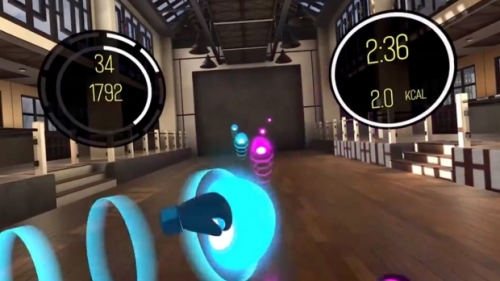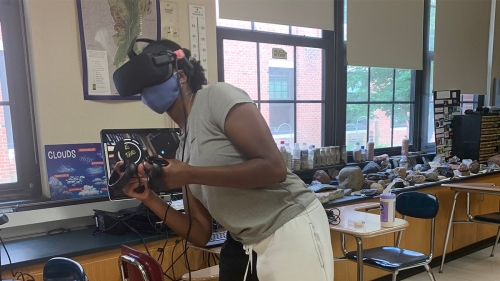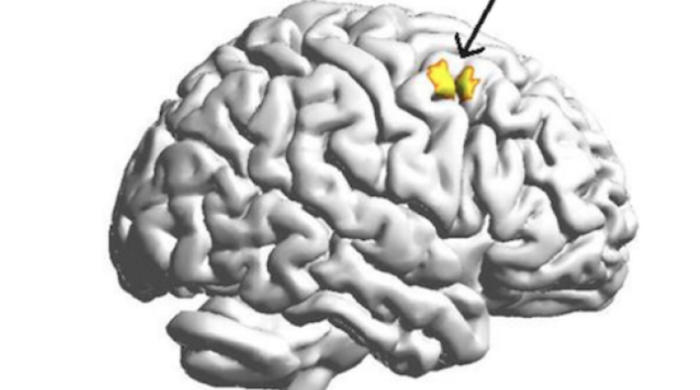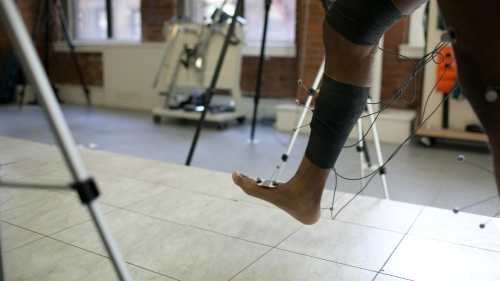In a head-to-head between virtual reality boxing and a YouTube-guided boxing exercise, VR boxing takes the win in reducing stress and improving cognitive function among adolescents, shows a new study of high school students.

Display from BOXVR game showing a left hook connecting with a target.
In an experiment conducted with 42 students between the ages 14 and 18, NYU Steinhardt Associate Professor of Physical Therapy Anat Lubetzky and her co-author Rose Cioffi studied three groups: one to play BOXVR on the Oculus Rift, a virtual reality gaming headset; one to use a guided boxing exercise on YouTube; and a control group. The non-control groups participated in 10-minute exercise sessions, five times a week for three weeks.
The results were published in Games for Health Journal.
“The COVID-19 pandemic has exacerbated anxiety and stress in adolescents, a population that is already known to show higher levels of stress than adults. We are looking for accessible, healthy, non-pharmaceutical methods to improve the mental, emotional, and physical well being of adolescents,” said Lubetzky. “This study is an exciting first step. While the sample size was small, and the results are preliminary, the study took place in a school setting and the adolescents who participated in the BOXVR group greatly enjoyed it.”

A high school student playing BOXVR in a classroom. Photo by Rose Cioffi.
Lubetzky and Cioffi (a student at Ossining High School at the time of the study), measured executive functions (higher-level cognitive functions, including visual scanning and working memory) using Trail Making Tests (TMT) A and B that asked participants to connect consecutive circles randomly arranged on a page. TMT A uses numbers while TMT B uses numbers and letters.
The researchers measured stress, anxiety, and enjoyment of the exercises by having participants self-report using the Psychological Stress Experience-Short Form, Pediatric Anxiety Short Form, and Physical Activity Enjoyment Scale, respectively.
Compared to the guided boxing video, the authors found statistical evidence that BOXVR was effective in reducing adolescent stress and improving executive function on the TMT B results. The BOXVR group also reported significantly greater enjoyment after each session than the guided video group. However, all three groups showed improvements in executive function on the TMT A tests.
The authors note that while their study shows the positive effects of VR fitness games, future studies should investigate how these games may “augment the mental and psychological benefits of exercise, thus potentially providing an alternate method of stress reduction in adolescents that is efficacious, engaging, and simple to implement in the school setting.”
During the study, Lubetzky was supported in part by an Early Career Researcher grant from the National Institute on Deafness and Other Communication Disorders (R21 DC018101).
Related Articles
Rehabilitating Your Brain with the Touch of an App
Gerald Voebel, associate professor of Occupational Therapy, discusses the role apps can play in the rehabilitation of patients with traumatic brain injuries.
The Place Where Video Games, Gender, and Sexuality Meet: An Interview with New Faculty Member Whitney Pow
Whitney Pow is a media studies scholar whose research focuses on queer and trans histories of video games, software, and computational media. We spoke to them about their scholarship and art.
Study Finds Stuttering Anticipation Prompts Unique Activity in the Brain
Researchers reveal elevated activity during stuttering anticipation in a part of the brain that plays key role in cognitive control.




